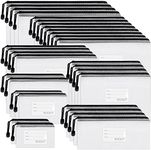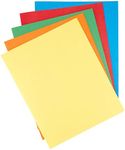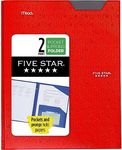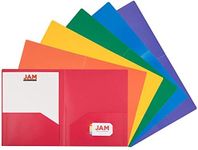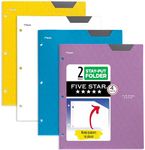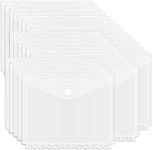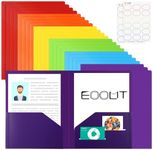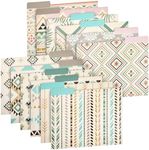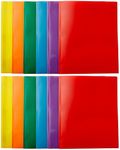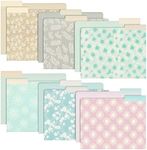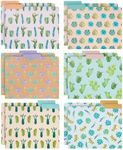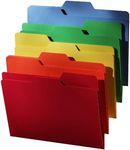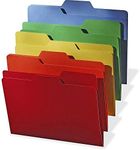Buying Guide for the Best Plastic Folders
When it comes to picking the right plastic folder, it's important to consider how you plan to use it. Plastic folders come in various styles, sizes, and features, each suited for different needs. Whether you need them for school, work, or personal organization, understanding the key specifications will help you make the best choice. Here are some important factors to consider when selecting a plastic folder.Material ThicknessMaterial thickness refers to how thick and sturdy the plastic is. This is important because thicker plastic folders are generally more durable and can hold up better to wear and tear. Thickness is usually measured in millimeters (mm). Folders with a thickness of around 0.2mm are lightweight and flexible, suitable for light use. Medium thickness, around 0.3mm to 0.5mm, offers a balance of flexibility and durability, ideal for everyday use. Thicker folders, above 0.5mm, are very sturdy and best for heavy-duty use. Consider how often you'll handle the folder and the weight of the documents you'll store to choose the right thickness.
SizeSize refers to the dimensions of the folder and the type of paper it can hold. This is crucial because you need a folder that fits your documents properly. Common sizes include A4, Letter, and Legal. A4 is widely used internationally, while Letter and Legal sizes are common in the United States. If you frequently handle standard-sized documents, choose a folder that matches those dimensions. For larger or smaller documents, ensure the folder can accommodate them without bending or damaging the papers.
Closure TypeClosure type refers to how the folder stays closed. This is important for keeping your documents secure and preventing them from falling out. Common closure types include snap buttons, elastic bands, zippers, and tuck flaps. Snap buttons and elastic bands are easy to use and provide quick access, making them suitable for frequent use. Zippers offer the most security and are great for transporting documents. Tuck flaps are simple and effective for basic storage. Consider how secure you need your documents to be and how often you'll access them to choose the right closure type.
Number of PocketsThe number of pockets refers to how many separate compartments the folder has. This is important for organizing your documents. Single-pocket folders are straightforward and good for holding a stack of papers. Two-pocket folders allow you to separate different types of documents, such as keeping assignments on one side and notes on the other. Multi-pocket folders, with three or more pockets, are ideal for organizing multiple categories of documents. Think about how you plan to organize your papers and choose a folder with the appropriate number of pockets.
Color and DesignColor and design refer to the visual appearance of the folder. While this might seem less important, it can actually help with organization and personal preference. Brightly colored folders can help you quickly identify different subjects or categories, while more subdued colors might be preferred in professional settings. Some folders also come with patterns or designs that can add a personal touch. Consider how you want to organize your documents and your personal style when choosing the color and design of your folder.
Additional FeaturesAdditional features refer to any extra functionalities the folder might have. This can include things like business card holders, pen loops, or label slots. These features can be important for added convenience and organization. Business card holders are useful for professional settings, pen loops ensure you always have a writing instrument handy, and label slots help you quickly identify the contents of the folder. Think about any extra needs you might have and look for folders that offer these additional features.
